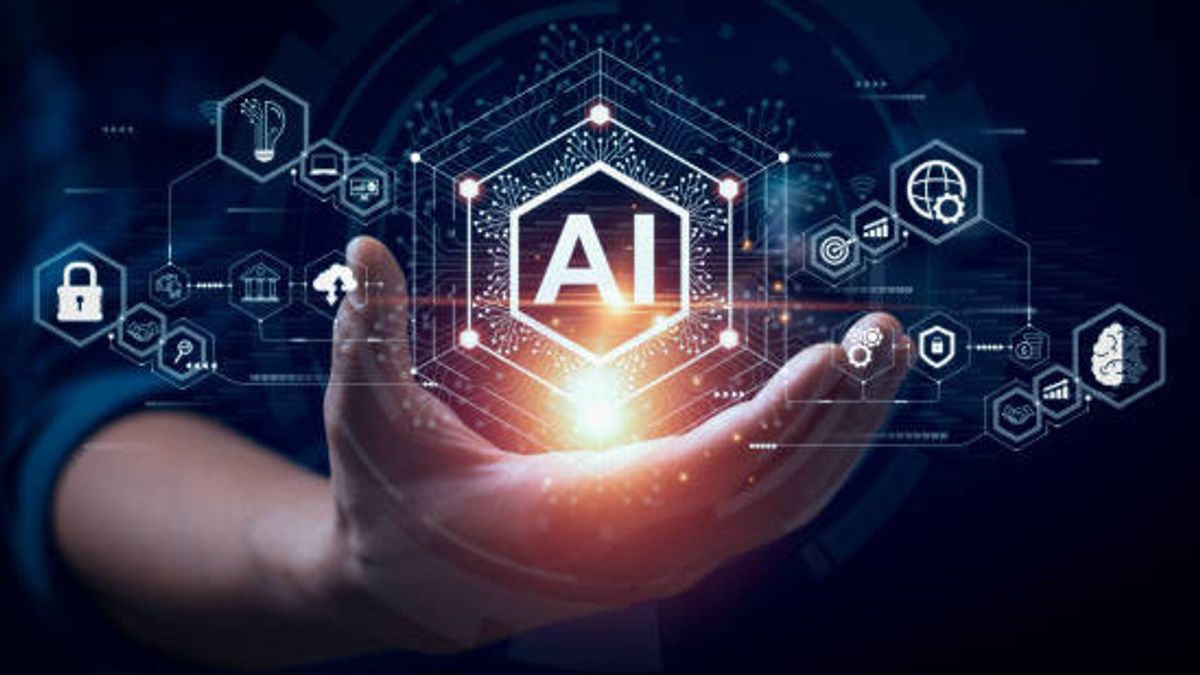JAKARTA - Definition of Artificial Intelligence (AI) has become an important topic in the world of technology, with the ability of an increasingly developed artificial intelligence system to carry out tasks usually related to human cognitive functions, such as interpreting speech, playing games, and identifying patterns.
The AI system generally learns by processing large amounts of data, looking for patterns to model in their own decision-making. In many cases, humans will oversee this AI learning process, strengthen good decisions and prevent bad ones. However, there is also an AI system designed to learn without supervision, such as by playing video games over and over until they finally understand the rules and ways to win.
Differences In Artificial Intelligence Are Strong And Weak
AI experts generally distinguish between powerful and weak artificial intelligence. Strong artificial intelligence, also known as artificial intelligence, refers to machines that can solve problems that have never been trained before - similar to human abilities.
This is the type of AI we see in films, such as robots from Westworld or the Data character from Star Trek: The Next Generation. This type of AI doesn't really exist yet.
Creating machines with human-level intelligence that can be applied to every task is the dream of AI researchers, but searches for generalized artificial intelligence have been full of difficulties. Some believe that research on powerful artificial intelligence should be limited due to the potential risks of creating powerful AI without proper control.
On the other hand, weak artificial intelligence, sometimes called narrow or specialized artificial intelligence, operates in a limited context and is a simulation of human intelligence applied to narrow problems. For example driving a car, transcripting human speech, or curating content on websites.
Examples of weak artificial intelligence include:
Differences In Machine Learning And Deep Learning
Although the terms "machine learning" and "in-depth learning" often appear in conversations about AI, both should not be used alternately. Deep learning is a form of machine learning, and machine learning itself is a subfield of artificial intelligence.
Machine learning is an algorithm that is computer-ladened and uses statistical techniques to help "learn" get better in a task, without having to be programmed specifically for the task. The ML (machine learning) algorithm uses historical data as input to predict new output values.
Machine learning consists of tutoring learning, where the expected output for input is known thanks to labelled data sets, and learning does not guide, where the expected output is unknown because it uses an unlabeled dataset.
Deep learning is a type of machine learning that runs input through a biology-inspired neural network architecture. This neural network has several hidden layers through which data is processed, enabling machines to "in-depth" in their learning, make connections and weight the input for the best results.
In-depth learning allows machines to recognize complex patterns and high-level features of the data, so as to be able to produce very accurate and sophisticated results in various tasks.
Examples of implementing machine learning in everyday life include:
Although deep learning has brought great progress in AI, challenges and risks remain. Some concerns include data security and privacy, biases that may arise from models built based on historically unfair data, as well as ethical questions about the use of AI in decision making that can have a significant impact on human life.
Currently, AI continues to develop and become an important part of our various industries and aspects of life. With the difference between powerful and weak artificial intelligence, as well as an understanding of machine learning and in-depth learning, it is hoped that we can take advantage of this technology wisely and responsibly.
We must continue to pay attention to AI developments and support research aimed at achieving advances in this technology by considering possible social and ethical implications. Thus quoted by voi.id from builtin.com.
The English, Chinese, Japanese, Arabic, and French versions are automatically generated by the AI. So there may still be inaccuracies in translating, please always see Indonesian as our main language. (system supported by DigitalSiber.id)













